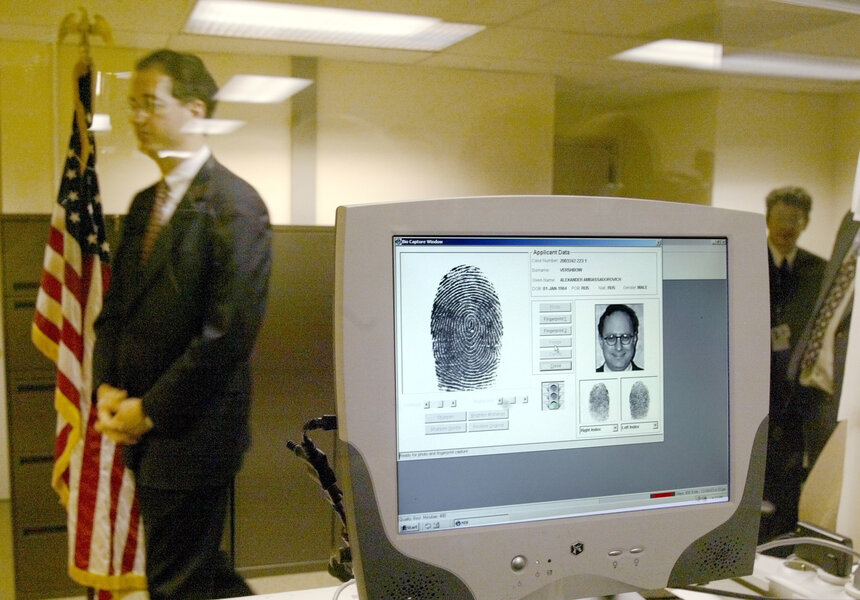A post-9/11 registry has been in disuse for years. Why would Obama ax it now?
Loading...
The Obama administration said on Thursday that it would bring a formal end to a special immigration program that imposed tight supervision on visitors from 25 Muslim-majority countries in Africa and the Middle East, including periodic in-person questioning with officials.
Instituted in the wake of the 9/11 attacks, the special screening was abandoned by the end of 2003, amid mounting criticism from Congress and civil- and human-rights groups, though the wider data-collection and tracking program that contained it – the National Security Entry/Exit Requirement System (NSEERS) – survived as late as 2011.
The announcement comes a little more than a month after Kansas Secretary of State Kris Kobach – the original architect of the screening as a Bush-era Justice Department official – told Reuters that President-elect Donald Trump’s transition team had been considering a similarly modeled program.
Mr. Trump’s apparently favorable view of the screening might underscore how fully the president-elect’s thinking melds national-security concerns with immigration policy matters – two areas typically seen as closely related but distinct, for economic reasons, by most members of his party.
Some elements of NSEERS, like the collection of fingerprints, iris scans, and other biometric information, has been adopted more fully at ports of entry. By contrast, the check-in requirements that attracted particular criticism were found to provide little in the way of anti-terrorism value, according to a 2012 government assessment – though they did sweep thousands of people who had overstayed their visa into deportation proceedings.
That might be seen by a Trump White House as reason to institute something similar. But the changing face of international jihadism means they’ll also face design problems that the Bush White House did not, says Muzaffar Chishti, the director of the Migration Policy Institute’s office at the New York University School of Law.
“There are a large number of countries outside the Muslim world where there is a significant ISIS presence,” including several close European partners, he tells The Christian Science Monitor. “So you’ll have to list all of those countries, then.”
A starker alternative, he adds, would be to target visitors’ religious affiliation more directly. “You can’t say, ‘we’ll only screen Muslims from those countries.’ You can’t discern that just from names. There are lots of Muslims with non-Muslim-sounding names and those with Muslim-sounding names who aren’t Muslim. It’s very hard to do as a practical matter.”
Obama’s action could set up roadblocks for the incoming administration if it does seek to reinitiate some version of the screening.
After NSEERS ended in 2011, says Dr. Chisti, the regulatory shell of the program remained.
“The speculation was that if President-elect Trump is going to use the NSEERS model, having the shell there will make it easy. You just add countries,” he tells the Monitor.
Obama's move to strip away those regulations won’t necessarily stop a Trump administration from reinstituting them. But it would make it at least a little bit harder, since enacted regulation has to be accompanied by a period of public comment that can be dragged out for few years if stakeholders are determined to do so.
The White House’s announcement responds partly to pressure from dozens of Democrats, who called on the president in a Dec. 1 letter to dismantle the legal framework for a program that had produced “no known terrorism convictions.”
One signee, New York Attorney General Eric Schneiderman, invoked Trump’s varying arsenal of proposals – which sometimes aim at barring Muslim immigration directly and sometimes focus more broadly on citizens of Muslim-majority countries.
“We can't risk giving President-elect Trump the tools to create an unconstitutional religious registry,” said Mr. Schneiderman in a separate statement, according to the Hill.








